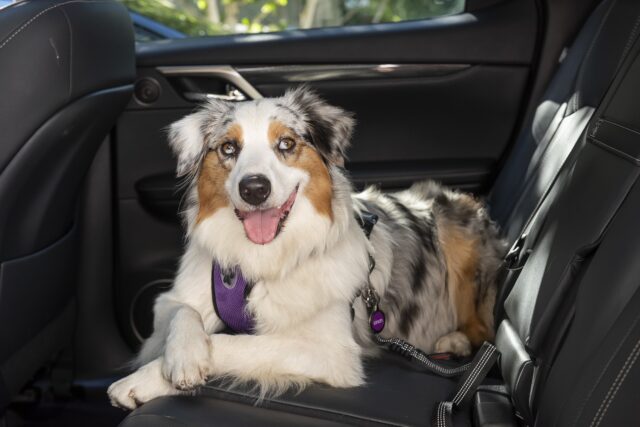This August Bank Holiday weekend, pet-owning Brits will be embarking on summer staycations across the nation with their furry friends, and many for the first time. With an estimated 3.2 million pets welcomed into households since the start of the pandemic, car travel will be a new experience for lots of animals – but do drivers know the best way to transport man’s best friend?
New consumer research from cinch, the UK’s fastest growing online used car marketplace, has revealed that two-thirds (66%) of drivers who own pets travel with them by car. Gen Zs and Millennials (18- to 34-year-old pet owners) drive with pets the most of any generation (80% report driving with their pets in the car), and 30% even upgraded their car to better accommodate their pets. Across all age groups, 20% of pet owners have changed up their car to find the paw-fect ride.
The top features pet owners look for in a new car are boot space (41%), durable seats (40%) and floor space (31%). Tinted rear windows (25%) and tech additions such as Tesla’s Dog Mode (17%) also play a part in the decision-making.
With many drivers travelling for the first time with their pets, cinch’s research also reveals that some owners have yet to consider the changes needed to accommodate their new companions, with 62% reporting that they did not research a vehicle’s suitability for pets before buying it.
One-fifth (20%) have spent no extra money adapting their car for their pet’s travel needs. Of the 80% who have, pet seatbelts and water bottles have proved the most popular investments. Drivers from the South West spend the least on their pet-friendly car accessories at an average of £51 since getting a pet, while Londoners splash out the most, with an average spend of £233.
Surprisingly, 45% of Brits were also not aware that they could receive a £5,000 fine if their pet was not suitably restrained while travelling in a car. Rule 57 of the Highway Code states that drivers must “make sure dogs or other animals are suitably restrained so they cannot distract you while you are driving or injure you, or themselves, if you stop quickly,” yet a quarter of pet owners (25%) let pets sit on theirs or their passengers’ laps while the car is moving. A further 18% let their pets roam free in the car while it’s out on the road.
Whether drivers choose to use a seat belt harness, pet carrier, dog cage, or dog guard for the boot, it’s vital that precious pups and feline friends are kept secured while a car is moving. That means no poking heads out of car windows or letting them wander around the vehicle. If owners want to drive with them ‘shotgun’ – in the front passenger seat – it’s also important that the passenger-side airbag is switched off and the seat moved back as far as possible. Learn more about the best-suited cars for dog owners through cinch at https://www.cinch.co.uk/guides/choosing-a-car/best-cars-for-dog-owners.
cinch has partnered with registered animal welfare charity, Rachael Myers, Animal Behaviourist at Blue Cross, to help Brits cinch it with their pets this August Bank Holiday, with top travel tips for getting dogs specifically comfortable around vehicles:
Start by walking them next to the parked car with the engine turned off, giving treats to positively reward them for being calm.
Once the dog is comfortable being around cars, let them sit in a car with the engine off, again rewarding them for calm behaviour.
Secure the dog safely in the car, whether that is through a seatbelt and harness, pet carrier, crate, or checking that the boot guard is properly secured.
If the dog is sat comfortably in the car, turn the engine on and begin driving.
Try to keep the first journey in the car as short as possible, taking no more than a 15-minute drive around the block to make sure the dog is feeling alright.
Slowly build up the amount of time they spend in the car – from there, happy driving!
Commenting on cinch’s research findings, [INSERT NAME AND TITLE] at Blue Cross, said: “As Brits are travelling more with their pets this summer, it’s vital that all drivers – particularly those with newer pets that might not have driven with animals before – fully understand the regulations. Making sure pets are comfortable and safe in the car is a top priority, and thankfully there are many ways to ensure they are.”
cinch-it-Sam Sheehan, Motoring and Lifestyle Editor at cinch, says: “The pandemic pet boom saw millions of Brits welcome dogs, cats, rabbits and reptiles into their homes. And this summer might be the first time for many that they’re travelling by car, whether on a UK staycation or abroad.
“Wherever drivers are headed, it’s crucial they are travelling safely with their pets. That means making sure pets are always secured in a vehicle while it’s moving. And fortunately, there are several ways to do this – from seatbelts and harnesses to crates and boot guards, there is an option to suit every pet.”




